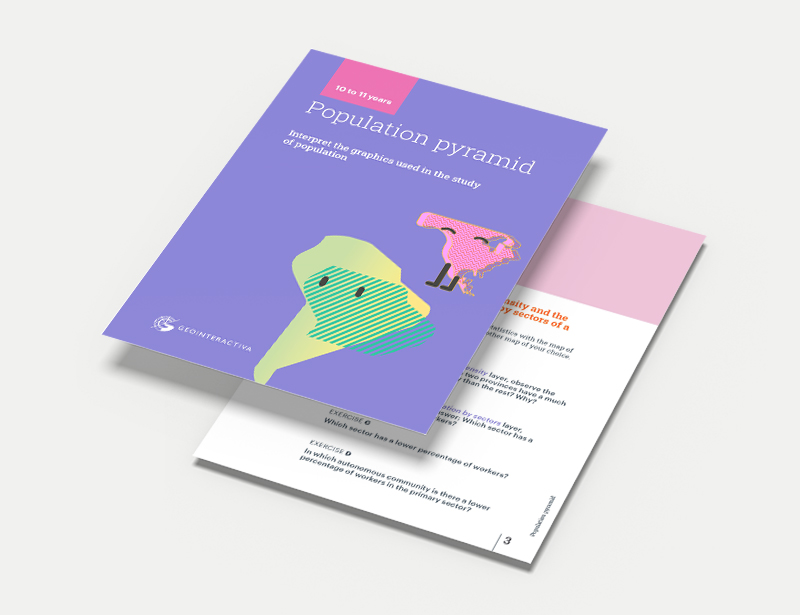
primary (10-11 years old)
Learning with graphics: bar chart and pyramid chart.
In this activity, you will discover how to work with two types of charts: bar chart and pyramid chart.
In this downloadable resource, you will find a PDF guide with instructions to enhance your classes. On one hand, we show you which platform tool you will be using, and on the other hand, we suggest activities suitable for students aged 10-11.
Do you want your classes to be engaging? Start with Geointeractive today.
We propose teaching geography in a fun way
What will your students learn from this educational activity?
The importance of working with graphics
Understanding graphics is essential in education and daily life. In geography, graphics are an important tool for understanding the distribution of population, economy, and land use patterns. In this article, we will know two important types of graphics: the bar graph and the population pyramid.
GDP by Sectors (bar chart)
A bar graph is a visual representation of data that uses bars to compare numerical or quantitative values. A common example of a bar graph used in geography is GDP by sector.
GDP or Gross Domestic Product is a measure of the monetary value of final goods and services produced in a country during a specific time period. GDP by sector divides the GDP into the economic sectors of agriculture, industry, and services.
Understanding GDP by sector is important because it allows children to understand how their country’s economy is distributed and how the economy influences people’s lives and the distribution of resources.
Children can learn to interpret bar graphs by understanding the axes of the graph, the scale, the legend, and the comparison of the bars. Teachers can use examples of GDP by sector from different countries and discuss the reasons for the differences between sectors.
Population Pyramid (pyramid chart)
Another important type of graph in geography is the population pyramid (by age ranges). A population pyramid is a graph that shows the age and gender distribution of a population at a given time.
This type of graph is important because it allows children to understand the population structure of their country, birth rate, life expectancy, and other important demographic factors.
Children can learn to interpret population pyramids by understanding the shape of the pyramid, the proportions of each age group, the impact of immigration and emigration on the population, and demographic trends.
A common example of a population pyramid is the age and gender pyramid of their country. Teachers can use this pyramid as an example to discuss the population structure, birth rate, life expectancy, and other important demographic factors.
Conclusion
Understanding graphics is an important skill for primary school students in geography and in daily life. Bar graphs and population pyramids are important tools for understanding the economy and demography of a country. Children can learn to interpret these graphs by understanding the axes of the graph, the scale, the legend, and the comparison of the bars. Teachers can use examples of GDP by sector and population pyramids to discuss the distribution of the economy and the population structure of their country.